Decoding Warren Buffett’s TSMC Maneuver: Geopolitics, Chips, and the Art of Risk Assessment
Investing in the global market involves navigating complex currents, from understanding fundamental business strength to assessing macroeconomic shifts and, increasingly, geopolitical risks. Few market events highlight this intricate dance better than Berkshire Hathaway’s brief, yet significant, foray into and swift exit from Taiwan Semiconductor Manufacturing Company, or TSMC. When the “Oracle of Omaha,” Warren Buffett, makes a move, the investment world pays close attention. His investment philosophy is typically characterized by long-term holds in understandable businesses with durable competitive advantages. So, what prompted a multi-billion dollar bet on a high-tech giant like TSMC, and more importantly, what triggered an unusually rapid retreat?
For investors like us, whether you are just starting your journey or you are a seasoned trader looking to refine your understanding of market dynamics, dissecting this event offers invaluable lessons. It forces us to confront the reality that even the strongest fundamentals can be overshadowed by external, systemic risks that are difficult to quantify but impossible to ignore. Let’s embark on a detailed exploration of Berkshire’s TSMC saga, pulling back the curtain on the layers of financial analysis, technological dominance, and international tension that shaped this high-profile decision.
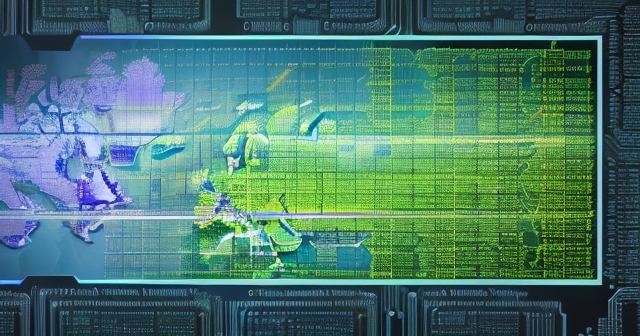
In the third quarter of 2022, regulatory filings revealed something uncharacteristically bold for Warren Buffett and Berkshire Hathaway: a substantial investment in Taiwan Semiconductor Manufacturing Company (TSMC). The position amounted to roughly $4.1 billion to $5 billion, acquiring approximately 60 million of TSMC’s American depositary shares (ADS). This move was met with surprise and considerable analysis across financial media and investor communities. Why? Because while Berkshire has long held significant stakes in companies leveraging technology (like Apple, which is a major TSMC customer), direct investments in pure semiconductor manufacturing companies had been notably absent from its portfolio.
For decades, Buffett has often expressed caution about investing in rapidly evolving technological sectors, citing his preference for businesses with predictable futures that are relatively insulated from disruptive innovation he doesn’t fully understand. He famously avoided most dot-com era stocks. His largest tech holding, Apple, is viewed more as a consumer products company with immense brand loyalty and ecosystem stickiness than a pure tech hardware play. Therefore, a multi-billion dollar commitment to the world’s most advanced chip manufacturer seemed, on the surface, to be a departure from this core tenet. It suggested that either Buffett or his investment lieutenants, like Ted Weschler or Todd Combs, saw something uniquely compelling and sufficiently understandable about TSMC’s business model to justify such a significant allocation.
- Buffett’s cautious approach to emerging technology sectors.
- TSMC’s unique market position and manufacturing capabilities.
- The unexpected nature of Berkshire’s investment in a semiconductor company.
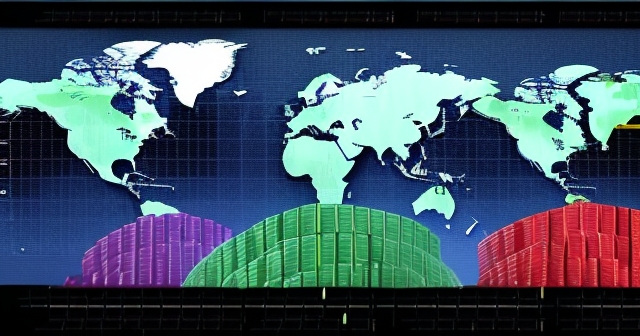
Was this a new era for Berkshire, signaling a greater willingness to engage with the cutting edge of technology? Or was there a deeper conviction about TSMC’s specific market position and its foundational role in the global economy that transcended typical tech sector risks? The initial consensus leaned towards the latter, interpreting the move as a recognition of TSMC’s unparalleled manufacturing capabilities and its essential position in supplying the digital infrastructure of the future. Investors often seek out companies with strong “moats” – sustainable competitive advantages that protect them from rivals. TSMC’s moat, built on decades of R&D, massive capital expenditures, process node leadership, and deep relationships with chip designers, appeared incredibly wide and deep.
The surprise of Berkshire’s initial investment was quickly followed by an even greater astonishment: a remarkably swift divestment. In February 2023, just one quarter after disclosing the initial purchase, filings showed that Berkshire Hathaway had slashed its TSMC holding by 86% in the fourth quarter of 2022. This was not a minor trimming; this was a near-complete reversal of a multi-billion dollar position almost as soon as it was revealed. If the investment itself was a rare move, the speed of the exit was virtually unprecedented for a position of this size in Buffett’s recent history.
Berkshire’s typical holding period for its major investments stretches not just for quarters, but often for years, if not decades. The company’s philosophy is built on being a long-term partner, weathering market volatility, and benefiting from compounding growth over extended periods. Selling 86% of a major stake within three months contradicted this fundamental approach. What could possibly have changed so dramatically, so quickly, to necessitate such a rapid exit? The market speculated wildly, offering various potential reasons: a shift in strategic allocation, a reassessment of the semiconductor cycle, or perhaps something external to the business itself.
| Investment Stage | Details |
|---|---|
| Initial Investment | Approximately $4.1 billion to $5 billion in TSMC. |
| Holding Reduction | 86% reduction in holding announced in February 2023. |
| Final Exit | Complete liquidation by the end of Q1 2023. |
The full picture emerged in May 2023, during Berkshire Hathaway’s annual shareholder meeting, a highly anticipated event where Warren Buffett and Charlie Munger often shed light on their decisions. Buffett confirmed that Berkshire had sold its entire remaining stake in TSMC by the end of the first quarter of 2023. The multi-billion dollar bet had lasted just two quarters from its initial build-up to complete liquidation. This rapid reversal wasn’t a quiet portfolio adjustment; it was a loud statement that demanded a clear explanation. And Buffett provided one, direct and unambiguous.
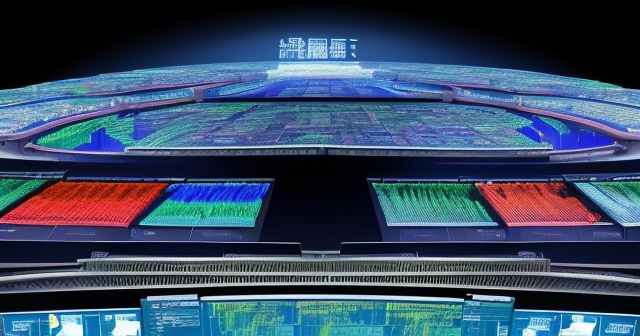
At the 2023 annual meeting, Warren Buffett explicitly stated the primary reason behind the swift divestment: concerns over TSMC’s location in Taiwan amidst rising geopolitical tensions between China and Taiwan. He acknowledged TSMC’s stellar qualities, referring to it as “one of the best-managed companies” and acknowledging its dominant position, saying it was “in their league” when it came to the critical role it plays in the global economy.
Consider this paradox: Buffett, a master of fundamental analysis who typically buys based on a company’s intrinsic value and future earning power, was effusive in his praise for TSMC’s business. He recognized its quality, its management, its competitive edge. By all accounts, the company itself met Berkshire’s high standards for operational excellence and industry leadership. Yet, despite these strong fundamentals, the investment was jettisoned. Why? Because the risk associated with *where* the company operated became paramount.
Buffett articulated a preference for finding similar investment opportunities in the United United States, implying that even a company as exceptional as TSMC carried an unacceptable level of “location risk” due to the potential for conflict across the Taiwan Strait. He highlighted the difficulty in assessing the probability or consequences of such a conflict, but the mere possibility, combined with the scale of investment required in TSMC, was enough to outweigh the company’s inherent business merits. This decision underscored a critical, often underappreciated, dimension of global investing: the vulnerability of even the most robust businesses to forces entirely outside their operational control.
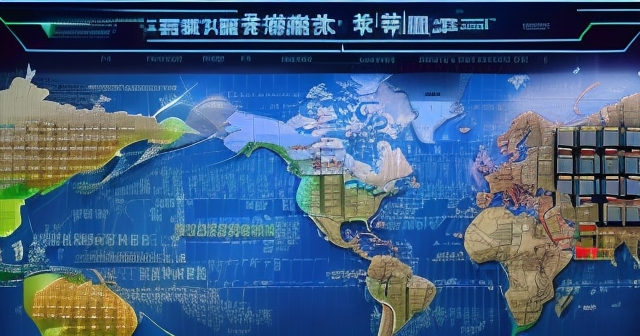
To fully appreciate Buffett’s decision, we must understand the complex and increasingly precarious geopolitical situation surrounding Taiwan. Taiwan is a self-governed democratic island that China views as a breakaway province that must be reunified with the mainland, by force if necessary. The relationship between Beijing and Taipei, and by extension, Beijing and Washington (Taiwan’s main international supporter and arms supplier), is one of the most significant sources of geopolitical risk in the world today.
Recent years have seen a significant escalation in tensions. China has increased military exercises around Taiwan, intensified diplomatic pressure to isolate the island, and adopted a more assertive stance regarding its sovereignty claims. The potential scenarios are deeply concerning: a full-scale invasion, a naval blockade, or other forms of military action could have devastating consequences for the region and the global economy. It’s not just the direct impact of conflict that is the risk; even the persistent *threat* of conflict creates uncertainty, disrupts planning, and influences business decisions.
| Risk Type | Description |
|---|---|
| Physical Risk | Direct threat of damage to TSMC’s fabrication plants in event of military action. |
| Operational Risk | Potential disruptions to raw material supply and labor force stability. |
| Political/Regulatory Risk | Possibility of sanctions or changes impacting TSMC’s global operations. |
| Market Risk | Potential for massive sell-off in TSMC stock due to escalating tensions. |
Buffett’s decision suggests that while he could evaluate TSMC’s business risk, the probability and impact of these geopolitical risks were either too high, too uncertain, or simply outside his comfort zone for a large, long-term investment.
Despite the geopolitical cloud, TSMC remains a company of immense strategic importance. It is not just a major player; it is, arguably, the single most critical node in the global semiconductor supply chain. TSMC is the world’s largest contract chip manufacturer, or “foundry.” This means that unlike companies such as Intel or Samsung (which also have foundry operations but primarily design and manufacture their own chips), TSMC focuses almost exclusively on manufacturing chips designed by other companies.
Its customer list reads like a who’s who of the global tech industry: Apple (for iPhone and Mac processors), Nvidia (for AI and gaming GPUs), Qualcomm (for smartphone chips), AMD, Broadcom, and many others. These companies rely on TSMC because it possesses manufacturing capabilities, particularly at the most advanced process nodes (like 5nm, 3nm, and upcoming 2nm), that are unmatched by competitors. Building and operating these state-of-the-art fabs requires staggering capital expenditures – often tens of billions of dollars per facility – and decades of accumulated expertise and intellectual property.
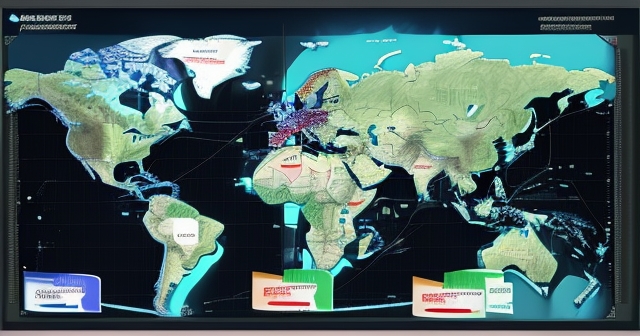
TSMC’s dominance stems from a relentless focus on manufacturing excellence, continuous innovation in process technology, and a commitment to being a pure-play foundry that doesn’t compete with its own customers. This unique position has made it the bottleneck for the world’s most advanced chips. Without TSMC, the production of the latest smartphones, laptops, servers, and, critically, advanced AI processors, would grind to a halt. It’s like being the only company in the world that can build the most advanced engines needed for every high-performance vehicle, regardless of who designed the car body.
Adding another layer to the story is the explosive growth of Artificial Intelligence (AI) and its profound impact on the demand for high-performance computing chips. The training and deployment of sophisticated AI models require immense processing power, primarily delivered by advanced Graphics Processing Units (GPUs) and specialized AI accelerators. Companies like Nvidia are at the forefront of designing these chips, but who manufactures them?
Over 90% of the world’s most advanced semiconductors, the very chips essential for powering the current AI revolution, are manufactured by TSMC. This includes the high-end GPUs from Nvidia and AMD that are in unprecedented demand from cloud providers and tech companies building AI capabilities. This dominance in advanced logic manufacturing means that TSMC is a direct and indispensable beneficiary of the AI boom. While other foundries are trying to catch up, TSMC has a multi-year lead in getting the latest, most complex chip designs into high-volume production with acceptable yields.
The surge in demand for AI chips, particularly since late 2022 and throughout 2023, has been a major tailwind for TSMC’s business and its stock price. Ironically, as Warren Buffett was exiting his position citing geopolitical risk, TSMC’s operational performance and market valuation were being strongly bolstered by the AI catalyst. This created a stark contrast: one of the world’s most successful value investors was selling due to external risk factors, while the market was increasingly valuing the company based on its fundamental role in a transformative technological shift.
Contrasting Investor Sentiments: Risk Aversion vs. Growth Opportunity
Berkshire Hathaway’s divestment, driven by geopolitical risk concerns, stands in contrast to the actions of many other major global investors. While Buffett was selling, other prominent funds and asset managers were either maintaining their positions or even increasing their stakes in TSMC. Regulatory filings from around the same time showed that firms like BlackRock Inc., Vanguard Group Inc., GIC Private Ltd. (Singapore’s sovereign wealth fund), and others held significant positions. Moreover, some hedge funds and investment firms known for focusing on growth and technology, such as Macquarie, Fidelity, Coatue Management, and Tiger Global Management, were reported to have acquired or added to their TSMC holdings after Berkshire’s initial purchase was disclosed.
This divergence highlights different approaches to risk assessment and investment horizons. For Berkshire, with its massive scale and focus on long-term, low-stress holdings, the Taiwan geopolitical risk was deemed too significant, regardless of TSMC’s quality. It was a systemic risk that couldn’t be diversified away by holding other stocks; it was tied to the core operational base of the company itself.
Other investors, however, appear to be weighing the risks differently. Perhaps they have a higher tolerance for geopolitical uncertainty, or they view the probability of a near-term, disruptive conflict as lower than Buffett did. More likely, they are placing a greater emphasis on TSMC’s fundamental business strength, its near-monopoly in advanced chips, and the immense growth potential driven by AI and other technological trends. For these investors, the operational certainty of TSMC’s market position and future revenue streams from indispensable technology might outweigh the potential, yet uncertain, impact of geopolitical events.
Consider it like assessing an investment in a business located in a seismically active zone. One investor might avoid it entirely due to the earthquake risk, regardless of how profitable the business is. Another might invest, calculating that the likelihood of a devastating earthquake is low enough, or the business’s profitability so high, that the risk is acceptable, perhaps even factoring in the possibility of rebuilding or relocating if necessary. Different investors have different risk appetites and different ways of modeling and reacting to tail risks.
TSMC’s Proactive Steps: Global Diversification Strategy
TSMC itself is acutely aware of the geopolitical risks associated with its concentrated manufacturing base in Taiwan. The company is proactively working to diversify its geographical footprint by building new fabrication plants in other regions. This strategy serves multiple purposes: it helps customers worried about supply chain resilience, it accesses incentives offered by governments seeking to secure domestic chip supply, and it mitigates the “location risk” that influenced investors like Warren Buffett.
Key diversification projects include:
- United States (Arizona): TSMC is building multiple fabs in Phoenix, Arizona. Initially planned as a single fab, the project has expanded to include a second, more advanced facility. This represents a significant investment (estimated upwards of $40 billion) and is seen as crucial for providing advanced chip manufacturing capacity on U.S. soil, addressing concerns about supply chain vulnerability and aligning with U.S. government efforts (like the CHIPS Act) to boost domestic semiconductor production. However, these projects face challenges, including higher construction costs, labor availability, and the complexities of replicating TSMC’s highly efficient Taiwan ecosystem abroad.
- Japan: TSMC has built its first fab in Kumamoto, Japan, in partnership with Sony Group Corp. and Denso Corp. A second fab in Japan is also under consideration. This move helps secure chip supply for important Japanese industries and leverages Japan’s strengths in semiconductor materials and equipment.
- Germany: TSMC has announced plans to build its first European fab in Dresden, Germany, in a joint venture with Bosch, Infineon, and NXP. This facility is intended to serve the automotive and industrial sectors, further diversifying TSMC’s manufacturing base and supporting European efforts to build semiconductor self-sufficiency.
| Project | Details |
|---|---|
| Arizona, USA | Building multiple fabs with an investment of approx. $40 billion. |
| Kumamoto, Japan | First fab built in partnership with Sony and Denso. |
| Dresden, Germany | Plans for a new fab in collaboration with Bosch and Infineon. |
These global expansion efforts, while requiring massive investment and presenting their own operational complexities, demonstrate TSMC’s strategic response to the geopolitical reality. They represent a long-term play to build resilience into its manufacturing network and potentially reduce the “Taiwan premium” or “Taiwan discount” factored in by investors concerned about concentration risk.
The situation with TSMC and Taiwan underscores a broader global challenge: the vulnerability of highly concentrated global supply chains. For decades, efficiency and cost optimization drove businesses to centralize production in locations that offered advantages, whether that was lower labor costs, proximity to raw materials, or, in TSMC’s case, the development of a unique, world-leading ecosystem of talent, suppliers, and infrastructure.
However, recent events – from the COVID-19 pandemic exposing fragile logistics networks to rising geopolitical tensions highlighting country-specific risks – have forced a reassessment. Resilience is becoming as important as efficiency. Governments around the world, including in the United States, Europe, and Japan, are actively promoting policies and offering incentives to reshore or friend-shore critical manufacturing capabilities, particularly in sectors like semiconductors, pharmaceuticals, and rare earth minerals.
The concentration of advanced chip manufacturing in Taiwan is perhaps the most prominent example of this global vulnerability. A disruption to TSMC’s operations, whether due to conflict, natural disaster, or political instability, would have catastrophic repercussions for the global economy. It would cripple the production of countless electronic devices, halt innovation in AI and other fields, and severely impact industries from automotive to defense. The world has become critically dependent on a single, geopolitically sensitive node.
As investors, understanding this macro-level vulnerability is crucial. It informs not only specific stock decisions (like investing in TSMC vs. its competitors or suppliers) but also broader portfolio allocation and risk management strategies. It highlights the interconnectedness of global markets and the potential for non-financial factors to have significant financial consequences.
Implications for Global Investment Strategies
What does Berkshire Hathaway’s TSMC episode teach us about global investment strategies today? Firstly, it reinforces that for certain investors, particularly those managing large, long-term portfolios with a strong focus on capital preservation alongside growth, geopolitical risk is a legitimate and sometimes overriding factor. It’s a reminder that a brilliant business in a risky location might be less attractive than a merely good business in a stable location, depending on the investor’s risk tolerance and mandate.
Secondly, it highlights the increasing need to understand and assess geopolitical risk as part of the investment process. This is no longer a niche concern for specialists; it’s a mainstream factor that can significantly impact valuation, supply chains, market access, and operational continuity for multinational corporations. Investors need access to high-quality information and analysis on political stability, international relations, and regional conflicts.
Thirdly, it demonstrates the tension between fundamental value investing and growth investing in the face of external shocks. While growth investors might focus on TSMC’s undisputed leadership in AI chips and its future revenue potential, value investors like Buffett are forced to consider the tail risk that could render even the most promising fundamentals irrelevant. Different investment styles will naturally arrive at different conclusions when confronted with the same set of facts and risks.
Finally, it underscores the ongoing shift towards supply chain diversification and resilience. Companies that are proactively building capacity in multiple regions, even at higher costs, may ultimately prove more resilient and attractive to investors concerned about concentration risk. This strategic shift could influence capital flows and investment opportunities in various regions as companies build new manufacturing bases.
What Can Investors Learn? Balancing Risk and Reward
So, what actionable insights can we, as investors, draw from this high-profile event?
- Risk Assessment is Paramount: Don’t just focus on financial metrics and operational performance. Broaden your analysis to include macro risks – economic, political, and geopolitical. How might events outside the company’s control impact its business?
- Location Matters: The geographical base of a company, especially one with critical manufacturing assets, is a significant risk factor in an increasingly unstable world. Understand the geopolitical environment of the countries where your portfolio companies have core operations.
- Understand Supply Chain Vulnerabilities: Which companies rely heavily on single suppliers or manufacturing locations? How resilient are their supply chains to disruption?
- Recognize Different Risk Appetites: Not all investors will react the same way to the same risk. Berkshire’s move doesn’t necessarily mean TSMC is a bad investment for *you*. It means that *for Berkshire*, the risk profile was unacceptable. Your own assessment of risk tolerance and investment horizon should guide your decisions.
- Stay Informed: Geopolitical situations are dynamic. What is a moderate risk today could escalate quickly. Pay attention to international news and analysis from reputable sources.
- Diversification Beyond Sectors: While sector and asset class diversification are standard, consider geographical diversification of your portfolio and understanding the geographical risk of your holdings.
This TSMC story is a masterclass in how real-world complexities intersect with investment decisions. It reminds us that investing is about balancing potential rewards against potential risks, and that sometimes, the most significant risks are those hardest to predict or quantify.
Looking Ahead: The Enduring Tension Between Geopolitics and Innovation
The future of TSMC and the global semiconductor industry will continue to be shaped by the tension between the relentless march of technological innovation and the unpredictable forces of geopolitics. TSMC’s operational excellence and its crucial role in powering AI and other future technologies remain undeniable. The demand for its cutting-edge chips is likely to continue growing, driven by global digital transformation.
However, the geopolitical risk associated with Taiwan is not going away. It is a persistent factor that will continue to be debated and assessed by investors worldwide. TSMC’s efforts to diversify its manufacturing base are a vital step in mitigating this risk over the long term, but building complex fabs in new locations takes years and billions of dollars. The transition will be gradual.
For investors, the takeaway is clear: sophisticated analysis must combine traditional financial due diligence with a robust understanding of macro-level risks. The Berkshire Hathaway TSMC saga is a powerful illustration that in today’s interconnected world, even the most exemplary company can be influenced, and investment decisions altered, by forces originating far from its balance sheet or income statement. It compels us to be more diligent, more comprehensive, and more humble in our assessment of the markets.
berkshire hathaway tsmcFAQ
Q:What were the reasons for Berkshire Hathaway’s investment in TSMC?
A:Berkshire Hathaway invested in TSMC due to its strong market position, high management quality, and essential role in the global economy, particularly in semiconductor manufacturing.
Q:Why did Buffett quickly divest from TSMC?
A:Buffett’s quick divestment was largely driven by geopolitical risk concerns regarding TSMC’s location in Taiwan amidst rising tensions with China.
Q:How does TSMC play a critical role in the global technology ecosystem?
A:TSMC is the world’s largest contract chip manufacturer, producing advanced semiconductors essential for various industries, including AI and consumer electronics, making it integral to the global tech ecosystem.
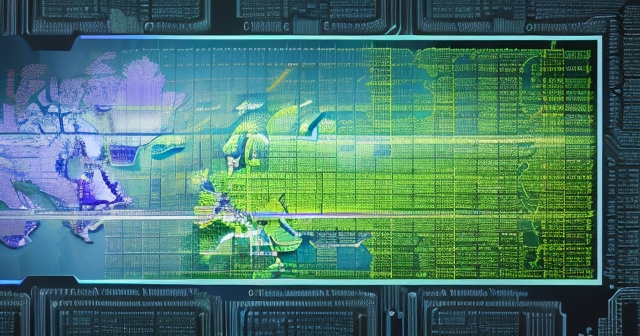
留言